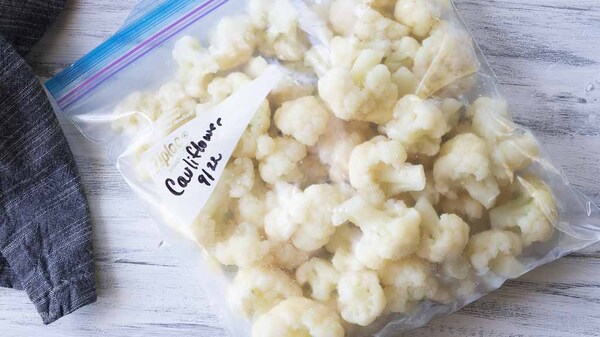Freezing cauliflower is a simple and effective way to preserve its freshness and extend its shelf life. Whether you’re planning to use it in soups, casseroles, or roasted dishes, frozen cauliflower retains its nutrients and flavor when prepared correctly. This guide will walk you through the steps of freezing cauliflower and provide tips on how to use it later.
Why Freeze Cauliflower?
- Minimize Waste: Prevent fresh cauliflower from spoiling.
- Save Money: Stock up on cauliflower when it’s in season or on sale.
- Convenience: Pre-prepared frozen cauliflower makes cooking faster and easier.
What You’ll Need
- Fresh cauliflower heads
- Knife and cutting board
- Large pot for blanching
- Bowl of ice water
- Baking sheet
- Parchment paper (optional)
- Freezer-safe bags or containers
- Marker for labeling
Step-by-Step Guide to Freezing Cauliflower
1. Choose Fresh Cauliflower
Select firm, white cauliflower heads with no signs of browning or wilting. The fresher the cauliflower, the better it will freeze.
2. Clean and Cut the Cauliflower
- Rinse the cauliflower under cold running water to remove dirt and debris.
- Trim off the leaves and stem.
- Cut the cauliflower into florets of your preferred size, depending on how you plan to use them.
3. Blanch the Cauliflower
Blanching helps preserve the color, texture, and flavor of cauliflower while preventing freezer burn.
- Bring a large pot of water to a boil.
- Add the cauliflower florets to the boiling water and cook for 3 minutes.
- Immediately transfer the blanched cauliflower to a bowl of ice water to stop the cooking process. Let it sit for 3-5 minutes.
- Drain the cauliflower and pat it dry with a clean kitchen towel or paper towels.
4. Pre-Freeze the Cauliflower
- Line a baking sheet with parchment paper.
- Arrange the cauliflower florets in a single layer, ensuring they don’t touch each other.
- Place the tray in the freezer and let the florets freeze for 1-2 hours until solid. This prevents them from sticking together later.
5. Transfer to Freezer Bags or Containers
- Once the florets are pre-frozen, transfer them to freezer-safe bags or airtight containers.
- Remove as much air as possible from the bags to prevent freezer burn.
- Label the bags or containers with the date and contents (e.g., “Cauliflower – Jan 2025”).
6. Store in the Freezer
Place the labeled bags in the freezer. Frozen cauliflower can last up to 12 months, but it’s best used within 6-8 months for optimal flavor and texture.
Tips for Using Frozen Cauliflower
- Cook Without Thawing: Add frozen cauliflower directly to soups, stews, or stir-fries.
- Roast from Frozen: Toss the frozen florets with olive oil, salt, and spices, then roast at 400°F (200°C) until golden and crispy.
- Mash or Puree: Use frozen cauliflower to make creamy mashed cauliflower or add it to smoothies for a nutrient boost.
- Avoid Raw Uses: Frozen cauliflower is best used in cooked dishes as it may lose its crisp texture when thawed.
Common Mistakes to Avoid
- Skipping Blanching: Unblanched cauliflower may develop an off-flavor and discoloration in the freezer.
- Not Drying Properly: Excess moisture can cause ice crystals, leading to soggy cauliflower.
- Overcrowding Bags: Leave some space in the bags for air circulation and easier storage.










